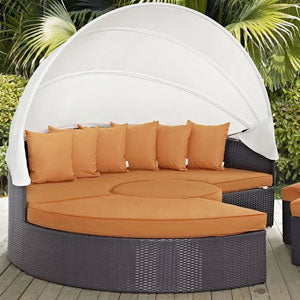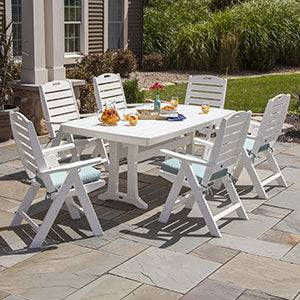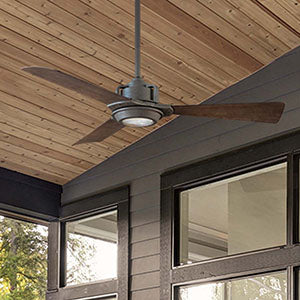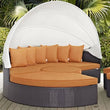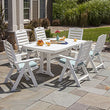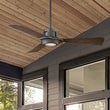Outdoor Living
5 Steps To Choosing a Gazebo or Pergola
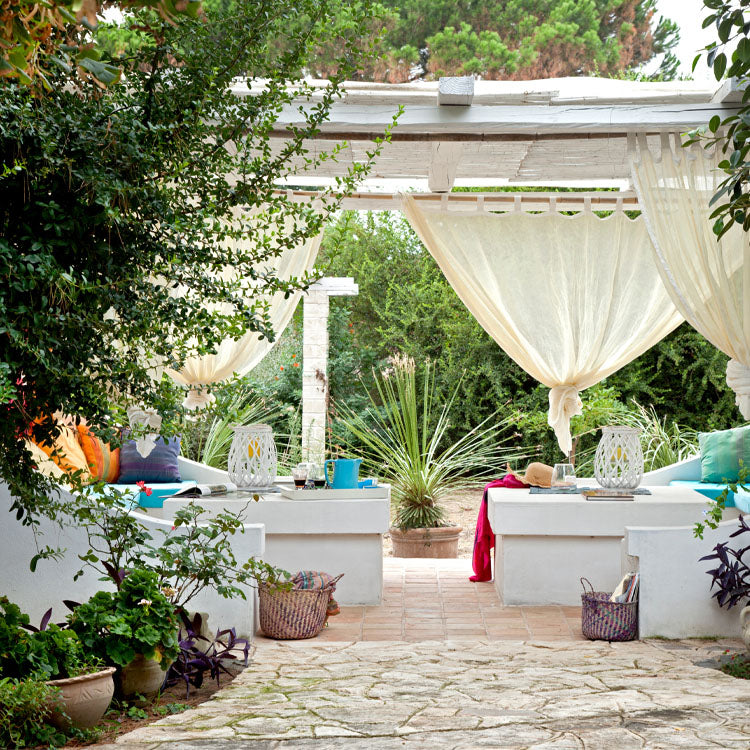
Gazebos and pergolas are popular shade structures for outdoor dining, lounging, and entertaining. When the punishing sun rises high in the sky, shade becomes a priceless commodity. Whether you’re sitting on the deck enjoying a good book, or spending time with friends in the backyard, the right outdoor shade structure can keep you from getting burned to a crisp or sprinkled on by an impromptu summer shower. Though they differ in structure and design, either can add value to your home and enhance its exterior. Follow these 5 steps and learn how to choose the best gazebo or pergola for your outdoor space.
1. Learn the Differences Between a Gazebo and a Pergola
The main difference between a gazebo and a pergola is the roof. A gazebo roof provides full coverage from the sun, while a pergola roof is slatted for partial exposure. The full-coverage roof of a gazebo offers more protection from the elements, so it’s a good choice for a designated entertaining area. The partially open design of a pergola roof is welcoming to climbing plants and vines, making it ideal to use in a garden or over a patio. A freestanding pergola can also serve as a shelter for a car, boat, outdoor equipment, or a patio furniture set. An attached pergola creates an outdoor extension of the home when installed over a patio or deck.
Both gazebos and pergolas will accommodate outdoor lighting, hanging plants, or patio fans to create the ultimate place to relax or entertain.

2. Determine How You’ll Use Your Gazebo or Pergola
Maybe you want to add a small spot of shade on a back deck for coffee in the morning, drinks in the evening, and reading in the afternoon. Or, you’d like a place where you can entertain a large group. It's important to know the purpose of your outdoor shade structure in order to choose the right size, design, and style.
- A small unit can fit a cushioned chair or a chaise lounge. It’s the perfect size for one or two people to sit and read or relax.
- A medium structure offers room enough for a patio conversation set or a hot tub. Choose this size gazebo or pergola if you like to have a few friends over for fun or relaxation.
- A large gazebo or pergola can serve as a complete outdoor room, whether it’s a kitchen or a living area. This size will cover a BBQ grill and outdoor dining furniture, ideal for anyone who enjoys hosting family dinners, parties, and special events.
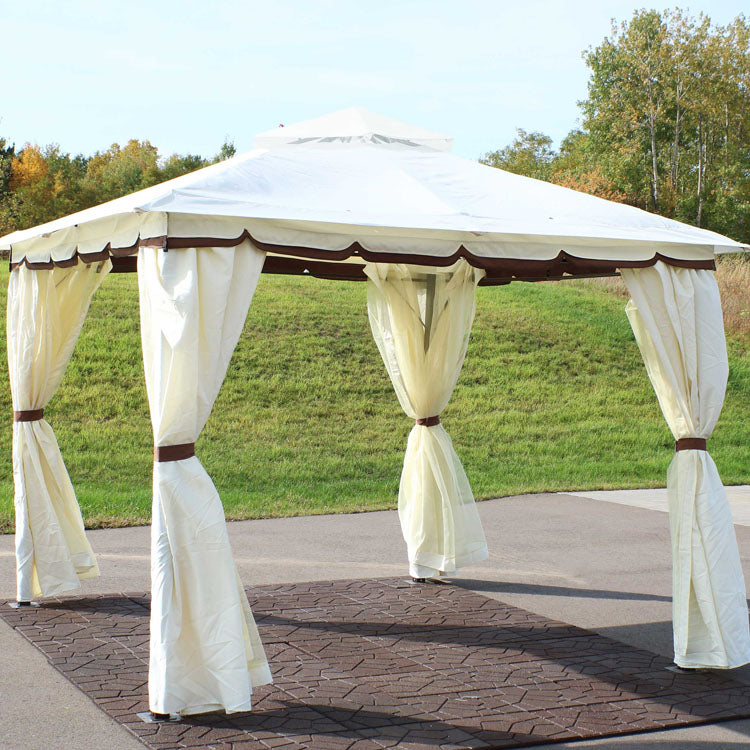
3. Measure Your Outdoor Space for Size
After you settle on the purpose of a gazebo or pergola in your space, next decide where to put it, and then measure the area, length by width, to determine size options. Don’t rely on the size of your deck, patio, or backyard space alone. Take into account overhangs, tree lines, and roof height, and allot enough entry space on all sides of the structure for accessibility. Then, measure the shade structure to ensure it will fit into your space.
4. Measure the Gazebo or Pergola
How To Measure a Gazebo
- Length and width: If the gazebo is square or rectangular, measure two perpendicular walls. If the gazebo is round, measure straight across the center of the unit to get the diameter, and then calculate the area by multiplying the diameter by 3.14.
- Height: Measure the gazebo from the base of the frame to the start of the ceiling. Do not measure all the way to the top of the roof.
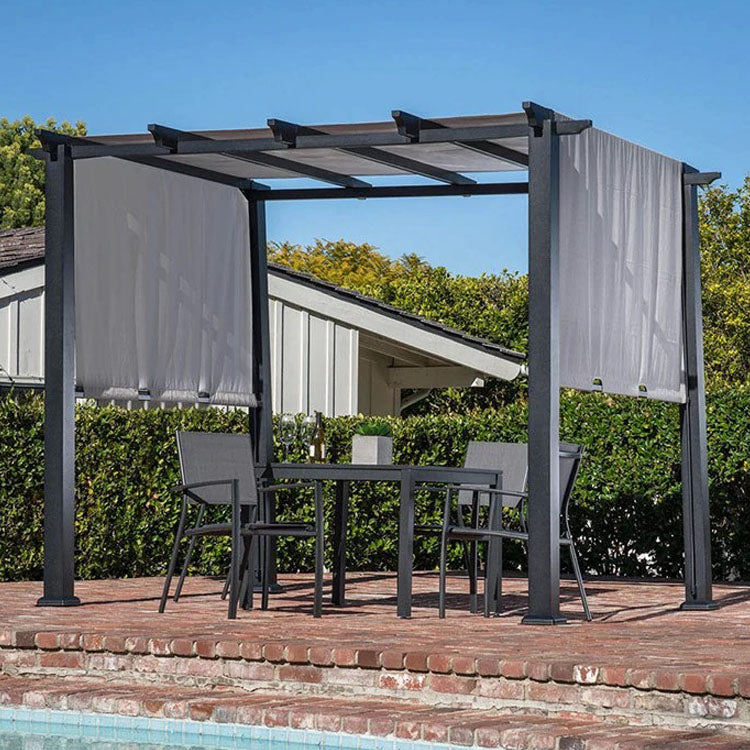
How To Measure a Pergola
- Length of an attached pergola: Measure the distance from the wall of the structure to which the pergola will attach to the outside of the posts. Then measure from the outside of the posts to the edge of the pergola’s overhang. Add the two measurements together.
- Length of a freestanding pergola: Since there is an overhang on both ends of a freestanding pergola, measure the distance from one end of the overhang to the other.
- Width of an attached or a freestanding pergola: Measure beam width from post to post. Measure each overhang from post to overhang edge. Add the three measurements together.
- Height of an attached or freestanding pergola: Measure the post from the base to the top, just below the bottom of the cross beam.
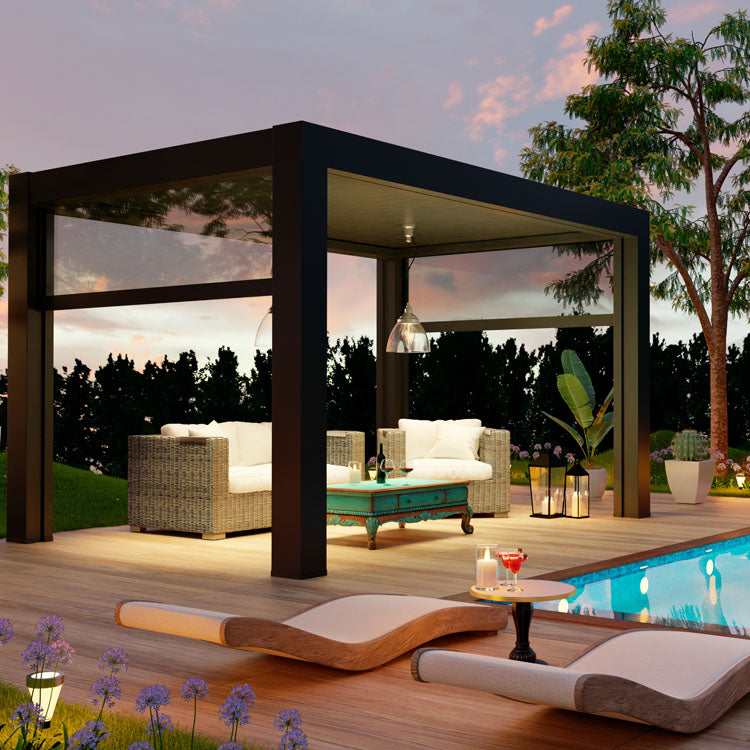
5. Decide on the Details
Gazebos and pergolas come in assorted styles and designs, and with uncomplicated or elaborate features. Decide on the details you prefer to make your final decision. Though color and embellishments should figure into your decision, the most important details to consider are the shape, material, and special features.
Shape: While most pergolas come in a fairly straightforward rectangular design, gazebos can be a little more elaborate. Choose a round, square, hexagonal, or oval-shaped gazebo for a small outdoor space. A wide-open space or sweeping lawn gives you wider-ranging options, including a rectangular, octagonal (eight-sides), dodecagonal (twelve-sided), or decagonal (twenty-sided) gazebo.
Materials: Both pergolas and gazebos are available in sturdy materials, including wood, steel, and aluminum, that hold up in adverse weather conditions. If you live in an area prone to harsh weather, from strong wind to bright sun, choose a metal shade structure made to withstand these conditions.
Features: Choose the features you need the most and that work best in your outdoor space. Options include:
- Weather resistance. Special treatments used on wood or metal help prevent rust, rot, and insect infestation.
- Foundation type. Some gazebos require a foundation, concrete pads, or pavers for setup. Others do not. Choose the best outdoor shade setup for your needs.
- Coverage. Mesh screens on the sides of a gazebo keep pests out; opaque walls offer privacy and elevate the look of an outdoor room.
- Roof shade. A pergola with a canopy or adjustable louvers over the roof slats offers extra sunshade and rain protection.
- Roof shape. Some pergolas have an arched roof for a contemporary aesthetic; some gazebos come with a tiered roof for extra airflow.
- Portability. A pop-up gazebo made with a fabric roof and walls surrounding a plastic or metal frame is easy to assemble, disassemble, move, and then reassemble. This type of shade structure is ideal to use in a temporary location, or if you prefer to store the unit in the winter.
Whether you choose a gazebo or a pergola, a shade structure can enhance your outdoor space and provide years of enjoyment for family and friends. Explore our advice on how to bring luxury living to your outdoor space, or our patio furniture buying guide, to learn how to transform your shade structure into a cozy spot for fresh air and sunshine anytime.

